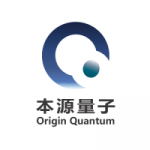Novel Quantum Sensor Provides New Approach to Early Diagnosis Via Imaging

(ScienceDaily) Recent international collaboration between the Japanese National Institutes for Quantum and Radiological Science and Technology (QST), Bulgarian Academy of Sciences, and Sofia University St. Kliment Ohridski in Bulgaria led to a promising technology for diagnosing oxidative stress: a novel quantum sensor.
The phenomenon called ‘oxidative stress’ is seen in affected organs during the early stages of certain difficult-to-treat diseases like cancer and kidney dysfunction. Detecting oxidative stress could thus enable early diagnosis and preventive treatments. But, the in vivo measurement of oxidative stress caused by both oxidation and reduction has historically been difficult. Now, scientists have developed an advanced quantum sensor technology that can detect ‘oxidative stress’ non-invasively throughout the body.
According to lead scientist Dr. Rumiana Bakalova and her colleague Dr. Ichio Aoki of QST, “the new sensor is appropriate for the early diagnosis of pathologies accompanied by inflammation, such as infectious diseases, cancer, neurodegeneration, atherosclerosis, diabetes, and kidney dysfunction.”
To test their novel chemical sensor, the scientists first performed experiments with cultures of normal (healthy) and cancerous colon cells in the lab. For this they used their sensor in the oxidized form. In healthy cells, EPR signals were quenched; but in cancer cells, they stayed strong. This indicates that the sensors were reduced in healthy cells by antioxidants but remained in their oxidized state in the cancer cells, which in turn suggests that the cancerous cells had a higher oxidative capacity.
This work is in its initial stages and much research is required before these sensors can be ready for medical use. But these findings reveal the potential of such technology. Dr. Bakalova notes: “Our sensor is suitable for analyzing even small redox imbalances associated with the overproduction of ROS, via MRI. And while MRI and CT by themselves have been able to diagnose advanced stage kidney damage, they have not yet been able to visualize early stages of dysfunction. The use of our probe could help clinicians identify patients in the early stage of renal damage before they need hemodialysis or kidney transplantation”.



















